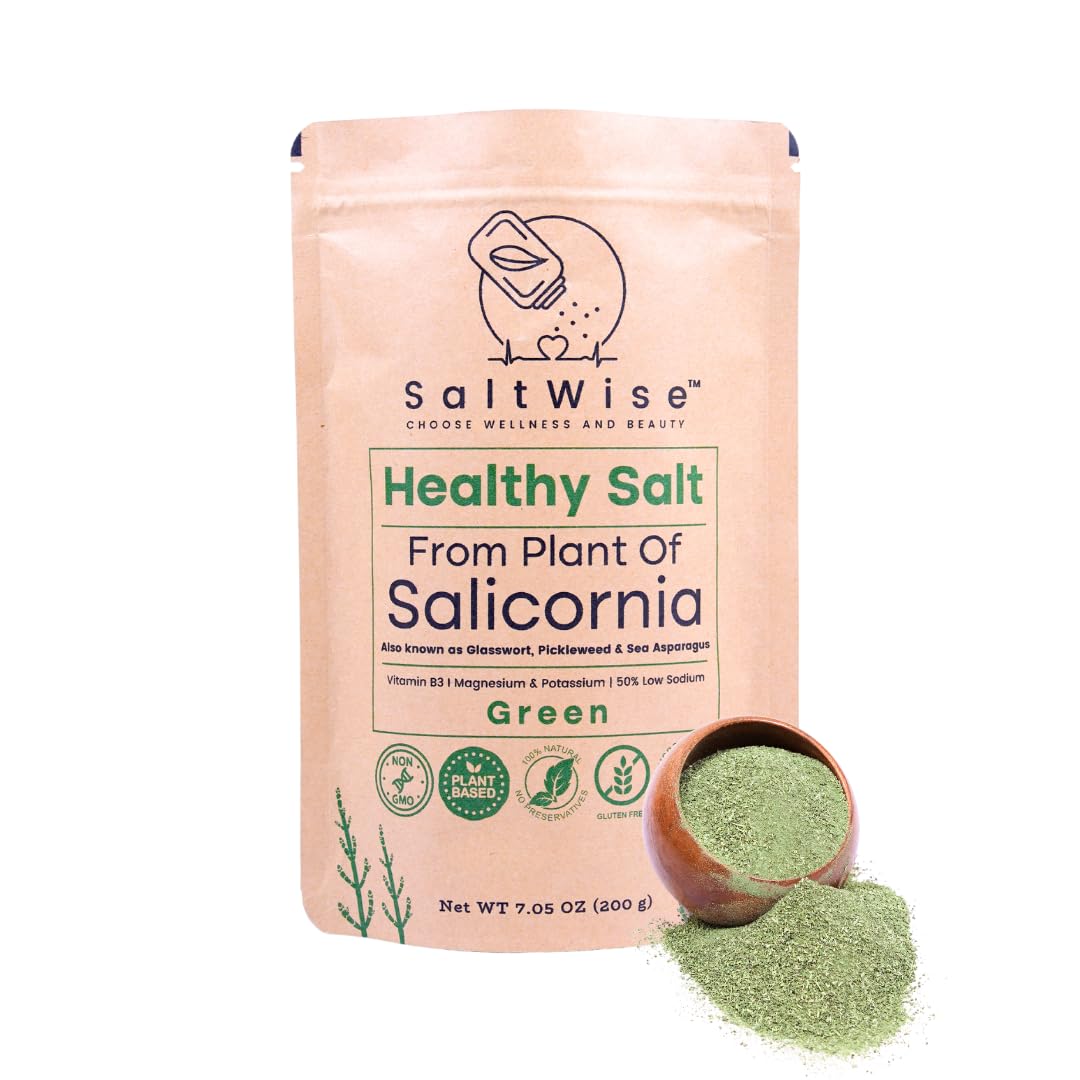As people strive to reduce their sodium intake, green salt is quickly gaining attention as a healthier alternative to traditional table salt. Derived from the salicornia plant, this mineral-rich salt offers a flavorful, low-sodium option that helps maintain essential nutrients in your diet. In this blog, we’ll delve into the benefits of green salt, how it works as a salt substitute, and why it’s becoming a popular choice for those looking to improve their health.
What Makes Green Salt Special?
Green salt is harvested from the salicornia plant, also known as sea asparagus. This plant grows in saline environments, absorbing essential minerals such as potassium, magnesium, and calcium from the seawater. The result is a mineral-rich salt that not only enhances the flavor of your food but also supports your overall health. Unlike heavily processed table salt, green salt is natural and unrefined, offering a cleaner alternative with significant health benefits.
The Health Benefits of Green Salt
- Low Sodium for Heart Health
One of the biggest advantages of green salt is its low sodium content. Sodium is a key contributor to high blood pressure, which can lead to heart disease. By using green salt as a salt substitute, you can reduce your sodium intake without sacrificing taste. This is especially beneficial for individuals with high blood pressure or those at risk for cardiovascular issues.
- Rich in Potassium
Green salt is packed with potassium, a mineral that helps balance sodium levels in the body. Potassium plays a crucial role in regulating blood pressure, supporting muscle function, and maintaining proper fluid balance. By incorporating green salt into your diet, you’re not only lowering sodium intake but also increasing your potassium consumption.
- Magnesium and Calcium Support
Another reason green salt stands out is its high magnesium and calcium content. Magnesium supports muscle and nerve function, while calcium is essential for strong bones and teeth. By using green salt in place of traditional salt, you’ll be adding these important minerals to your diet, promoting overall health and wellness.
Green Salt: The Perfect Salt Substitute
For those looking to replace regular table salt with a healthier alternative, green salt is the perfect choice. Not only does it provide the salty flavor we all love, but it also delivers essential nutrients that support heart health, muscle function, and bone strength. Here’s how you can use green salt as a salt substitute in your everyday meals:
- Season Soups and Stews: Add a pinch of green salt to your soups and stews for enhanced flavor and nutrition.
- Sprinkle on Roasted Vegetables: Swap traditional salt with green salt to bring out the natural flavors of roasted or grilled vegetables.
- Use in Salad Dressings: Mix green salt with olive oil, vinegar, and herbs for a heart-healthy, low-sodium salad dressing.
Conclusion
Making the switch to green salt is a simple yet effective way to improve your diet and support better health. With its low sodium content and wealth of essential minerals, green salt is the ideal salt substitute for anyone looking to reduce their sodium intake while maintaining flavor and nutrition. Start incorporating green salt into your meals today and experience the benefits of this natural, mineral-rich salt alternative.
Pigeon by Stovekraft Amaze Plus Electric Kettle (14289) with Stainless Steel Body, 1.5 litre, used for boiling Water, making tea and coffee, instant noodles, soup etc. (Silver)
₹599.00 (as of 23 December, 2024 11:23 GMT +05:30 - More infoProduct prices and availability are accurate as of the date/time indicated and are subject to change. Any price and availability information displayed on [relevant Amazon Site(s), as applicable] at the time of purchase will apply to the purchase of this product.)Amazon Brand - Presto! Garbage Bags Large 90 Count|24 x 32 Inches Black , For Dry & Wet waste|15 bags/roll (Pack of 6)
₹325.00 (as of 23 December, 2024 11:23 GMT +05:30 - More infoProduct prices and availability are accurate as of the date/time indicated and are subject to change. Any price and availability information displayed on [relevant Amazon Site(s), as applicable] at the time of purchase will apply to the purchase of this product.)BELOXY Projector Lights Ocean Wave, 3D Water Wave Effect LED Night Light, Crystal Table Lamp with Remote (Blue)
₹449.00 (as of 23 December, 2024 11:24 GMT +05:30 - More infoProduct prices and availability are accurate as of the date/time indicated and are subject to change. Any price and availability information displayed on [relevant Amazon Site(s), as applicable] at the time of purchase will apply to the purchase of this product.)Boldfit Tumbler Bottle Water Bottle with Lid and Straw 1.2L Stainless Steel Double Insulated Tumblers for Hot & Cold Drink 100% Leakproof Tumbler with Handle & Reusable Straw Sipper with Brush 1200ml
₹1,299.00 (as of 23 December, 2024 11:24 GMT +05:30 - More infoProduct prices and availability are accurate as of the date/time indicated and are subject to change. Any price and availability information displayed on [relevant Amazon Site(s), as applicable] at the time of purchase will apply to the purchase of this product.)Recron Certified Dream Fibre Pillow (41X61, Fiber;Microfiber, White, Pack Of 2)
₹399.00 (as of 23 December, 2024 11:23 GMT +05:30 - More infoProduct prices and availability are accurate as of the date/time indicated and are subject to change. Any price and availability information displayed on [relevant Amazon Site(s), as applicable] at the time of purchase will apply to the purchase of this product.)Discover more from The General Post
Subscribe to get the latest posts sent to your email.





